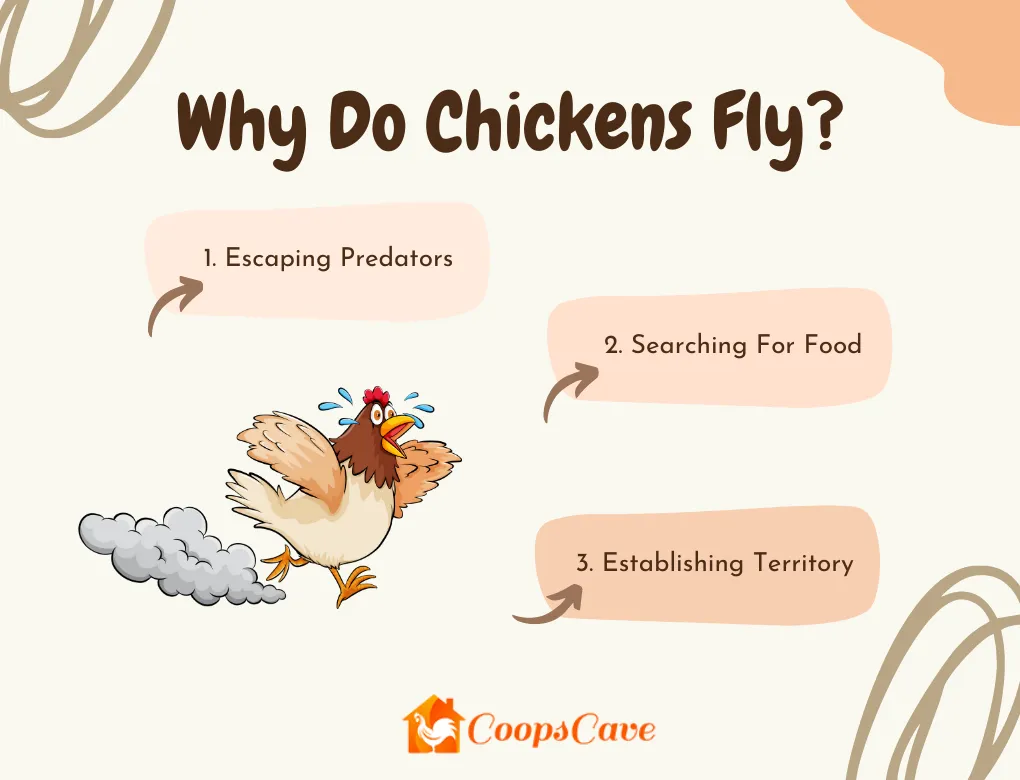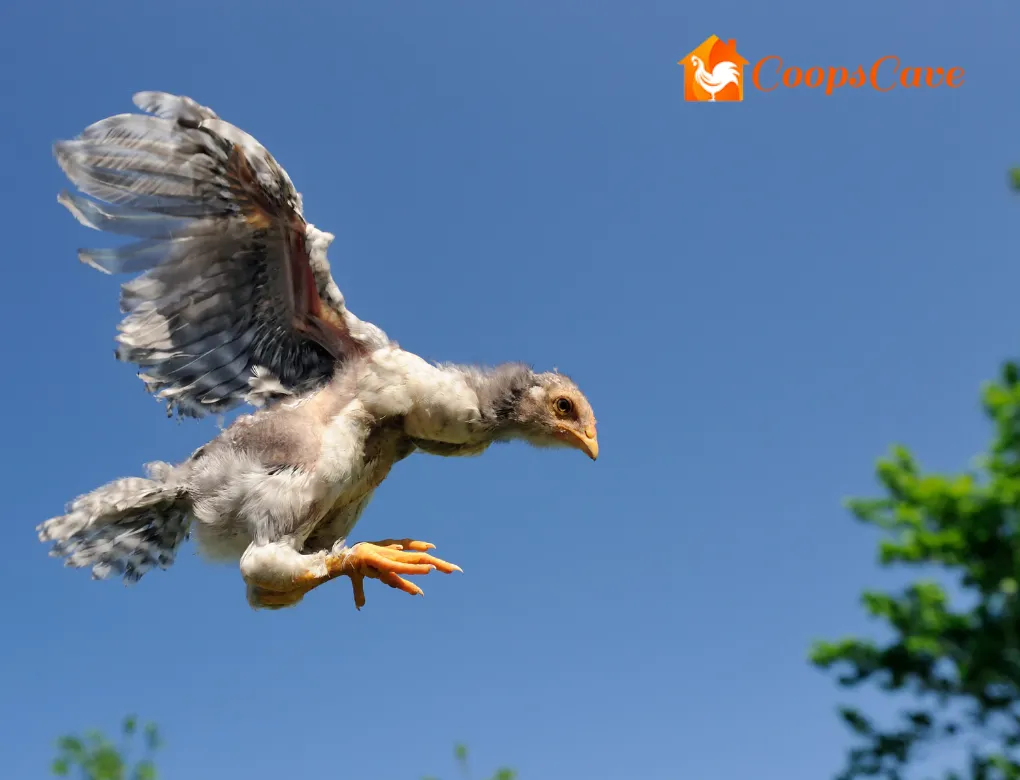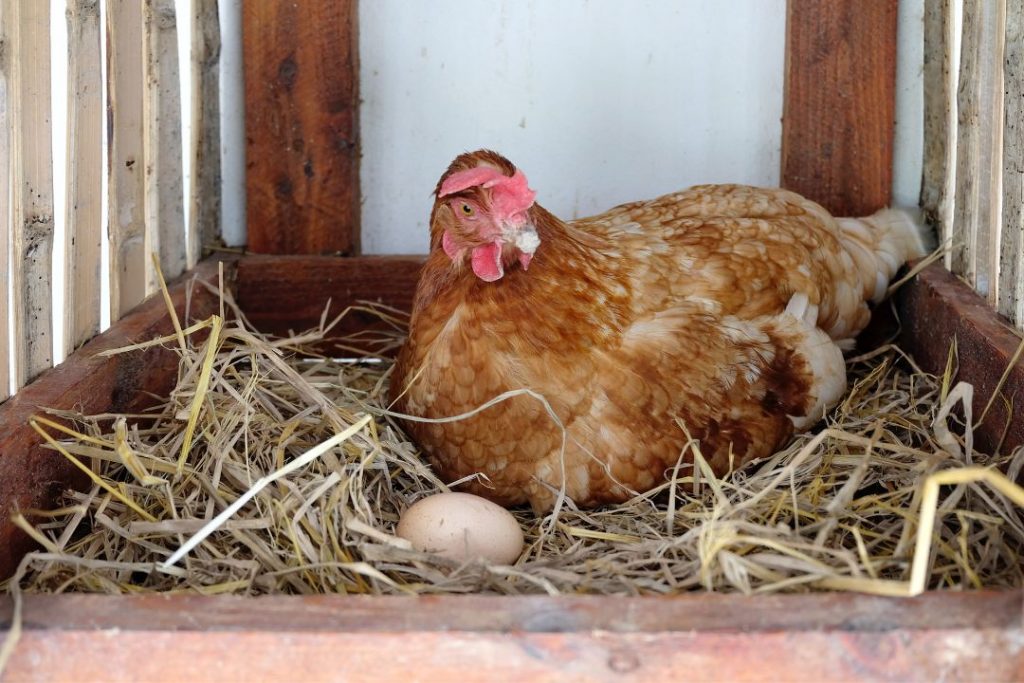Ever looked at your chicken and wondered, “how do chickens fly?” It’s a question that has intrigued many, from curious children to seasoned poultry farmers.
Chickens fly using their wings, feathers, and muscle systems. Your bird’s flying mechanics contains three systems: taking off, in flight, and landing. Usually, your hens fly to escape predators, search for food, and establish their territory.
This guide will take you through every detail of how chickens fly. So without further ado, start reading it!
How Do Chickens Fly – The Anatomy Of Flight
Understanding chicken flight begins with learning its unique anatomy. Let’s explore this in detail.
1. Wings And Feathers
Chickens’ wings and feathers are vital for flight. They’re designed for both lift and control. The wings, broad and robust, generate the lift needed for flight.
Each wing has a specific structure, with primary and secondary feathers. Primary feathers, located at the wingtip, are long and pointed. They’re the main source of lift during flight.
Secondary feathers, closer to the body, are shorter and rounder. They provide stability and control during flight. Together, these feathers allow chickens to take off, stay airborne, and land safely.
2. Muscular System
The muscular system has a significant role in chicken flight. Chickens have a powerful pectoral muscle, also known as the breast muscle. This muscle is responsible for the downward stroke of the wings. It’s this stroke that provides the thrust for takeoff and flight.
The supracoracoideus muscle, located underneath the pectoral muscle, controls your bird’s upward wing stroke. This muscle helps slow down the wing beat, preparing your chicken for landing. These muscles work together, allowing your hen to fly effectively.
How Do Chickens Fly – The Mechanics Of Chicken Flight
Let’s dive into the mechanics of chicken flight, from takeoff to landing.
1. Taking Off
The process of taking off is a combination of running and flapping. Chickens start by running, gaining speed with each step. As they run, they begin to flap their wings.
The rapid wing flapping generates lift, helping them become airborne. This process requires significant energy, explaining why chickens prefer staying on the ground when possible.
2. In Flight
Once airborne, chickens maintain flight through rapid wing flapping. The continuous flapping generates enough lift to keep them in the air. Their tail feathers play a crucial role during this phase.
The tail feathers act like a rudder, helping chickens steer and maintain balance. They can adjust their direction and altitude by changing the angle and speed of their wing flaps.
3. Landing
Landing is a delicate process for chickens. As they approach the ground, they slow their wing beats. This reduces their speed and descent rate, preparing them for a gentle landing. They extend their legs forward, ready to touch down.
Upon landing, the bird uses their wings for balance. They spread their wings wide, slowing their momentum and stabilizing their body. This ensures a smooth and safe landing, preventing injuries.
Why Do Chickens Fly?

Chickens fly for specific reasons, all tied to survival and social dynamics.
1. Escaping Predators
Flight is an essential survival strategy for chickens. When a predator approaches, a chicken’s first instinct is to flee.
Flight allows them to escape quickly, reaching high places where ground-based predators can’t follow. This quick burst of flight can mean the difference between life and death in the wild.
2. Searching For Food
Chickens also use flight in their quest for food. If a tasty morsel is spotted beyond a fence or obstacle, flight provides a quick and efficient way to reach it.
This ability to fly over barriers allows your chickens to access food sources otherwise out of reach.
3. Establishing Territory
Flight also plays a role in the social dynamics within a chicken flock. Chickens establish a pecking order, and flight can be a tool in these social interactions.
A dominant chicken may fly towards a rival to assert its dominance, or a lower-ranking chicken may use flight to escape a confrontation. In this way, flight contributes to the social structure and harmony within the flock.
Limitations Of Chicken Flight
While chickens can fly, they face several limitations that restrict their flight. Those are:
1. Body Weight
Your chicken’s body weight significantly impacts its flight abilities. Heavier chickens have more mass to lift off the ground, making flight more challenging.
They require more energy to become airborne and maintain flight. As a result, heavier chicken breeds often struggle with flight, managing only short, low flights.
2. Wing Clipping
Wing clipping is a common practice among chicken keepers. It involves trimming the primary feathers of one wing. This unbalances the chicken, making sustained flight difficult.
The purpose of wing clipping is to prevent your chickens from escaping their enclosures. However, it also limits their natural flight abilities.
3. Domestication
Domestication has also limited the flight abilities of chickens. Chickens have been carefully bred for egg or meat production over many generations.
These breeds frequently have larger bodies and smaller wings, limiting their flying capacity. As a result, the ability to fly has been significantly diminished in many domestic chicken varieties.
Enhancing Your Chickens’ Flight Abilities
We recommend you consider these practices to improve your flock’s flight abilities.
1. Provide A Safe Environment
Creating a safe environment encourages chickens to develop their flight skills. Ensure they have ample space to practice flying.
A spacious and secure enclosure allows chickens to spread their wings, take off, and land safely. Additionally, provide high roosts or perches where they can practice landing and balancing.
2. Maintain A Healthy Diet
A nutritious diet is essential for optimal muscle and feather development. Strong muscles provide the power for your chicken’s flight, while healthy feathers contribute to lift and control.
Feed your chickens a varied diet that includes high-quality protein, vitamins, and minerals. This promotes overall health and enhances their flight abilities.
3. Avoid Overcrowding
A chicken’s capacity to fly may be restricted by crowding. Chickens cannot stretch their wings widely enough to fly when crammed into a compact area. This can hinder their flight development.
Ensure your chickens have enough space to move around comfortably, stretch their wings, and practice flying. Avoid overcrowding in the coop or run to promote better flight capabilities.
The Impact Of Flight On Your Chicken Behavior
Flight has a profound influence on your chicken behavior beyond their physical abilities. The impact are:
1. Pecking Order
Within a flock, chickens establish a pecking order, a social hierarchy. Flight plays a role in these dynamics.
A lower-ranking chicken may use flight to escape a dominant chicken’s aggression or assert its position by flying toward a rival. Flight can be a tool for social interaction and establishing dominance within the flock.
2. Roosting Habits
Chickens are instinctive to roost in high places, especially at night. Flying to elevated spots keeps them safe from ground predators that may pose a threat while they sleep.
The ability to fly allows chickens to reach these safe roosting spots, ensuring their security and restful sleep.
3. Exploring Their Environment
Flight grants chickens the ability to explore their surroundings more extensively. They can fly over fences, walls, or other obstacles to investigate new areas. This gives them access to different foraging opportunities, potential hiding spots, and opportunities for adventure.
However, it can also present challenges for chicken keepers who must ensure their chickens don’t wander too far or encounter potential dangers beyond their designated space.
Frequently Asked Questions
How High Can Chickens Fly?
The height a chicken can fly depends on its breed and individual health. However, most chickens can fly up to 10 feet high.
Can All Chickens Fly?
Not all chickens can fly. Some breeds, especially those bred for meat production, have limited flight abilities due to their size and weight.
Final Thoughts
Understanding “how do chickens fly” gives you a deeper appreciation for these fascinating creatures. Their flight abilities, while limited compared to other birds, are ideally suited to their needs and lifestyle.
Chickens employ flight to improve their survival and well-being, whether evading predators, looking for food, or establishing territory.



